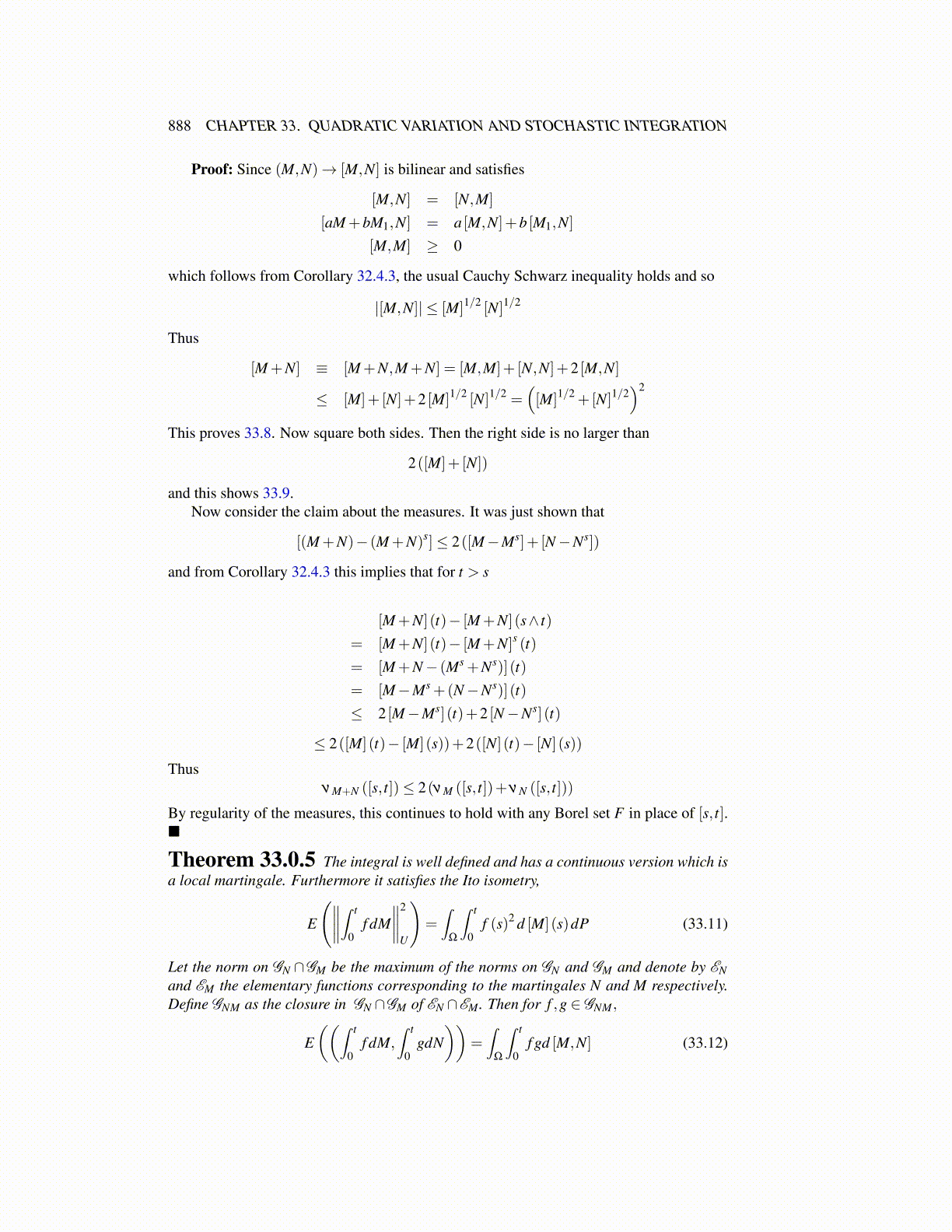
888 CHAPTER 33. QUADRATIC VARIATION AND STOCHASTIC INTEGRATION
Proof: Since (M,N)→ [M,N] is bilinear and satisfies
[M,N] = [N,M]
[aM+bM1,N] = a [M,N]+b [M1,N]
[M,M] ≥ 0
which follows from Corollary 32.4.3, the usual Cauchy Schwarz inequality holds and so
|[M,N]| ≤ [M]1/2 [N]1/2
Thus
[M+N] ≡ [M+N,M+N] = [M,M]+ [N,N]+2 [M,N]
≤ [M]+ [N]+2 [M]1/2 [N]1/2 =([M]1/2 +[N]1/2
)2
This proves 33.8. Now square both sides. Then the right side is no larger than
2([M]+ [N])
and this shows 33.9.Now consider the claim about the measures. It was just shown that
[(M+N)− (M+N)s]≤ 2([M−Ms]+ [N−Ns])
and from Corollary 32.4.3 this implies that for t > s
[M+N] (t)− [M+N] (s∧ t)
= [M+N] (t)− [M+N]s (t)
= [M+N− (Ms +Ns)] (t)
= [M−Ms +(N−Ns)] (t)
≤ 2 [M−Ms] (t)+2 [N−Ns] (t)
≤ 2([M] (t)− [M] (s))+2([N] (t)− [N] (s))
ThusνM+N ([s, t])≤ 2(νM ([s, t])+νN ([s, t]))
By regularity of the measures, this continues to hold with any Borel set F in place of [s, t].■
Theorem 33.0.5 The integral is well defined and has a continuous version which isa local martingale. Furthermore it satisfies the Ito isometry,
E
(∥∥∥∥∫ t
0f dM
∥∥∥∥2
U
)=∫
Ω
∫ t
0f (s)2 d [M] (s)dP (33.11)
Let the norm on GN ∩GM be the maximum of the norms on GN and GM and denote by ENand EM the elementary functions corresponding to the martingales N and M respectively.Define GNM as the closure in GN ∩GM of EN ∩EM . Then for f ,g ∈ GNM,
E((∫ t
0f dM,
∫ t
0gdN
))=∫
Ω
∫ t
0f gd [M,N] (33.12)